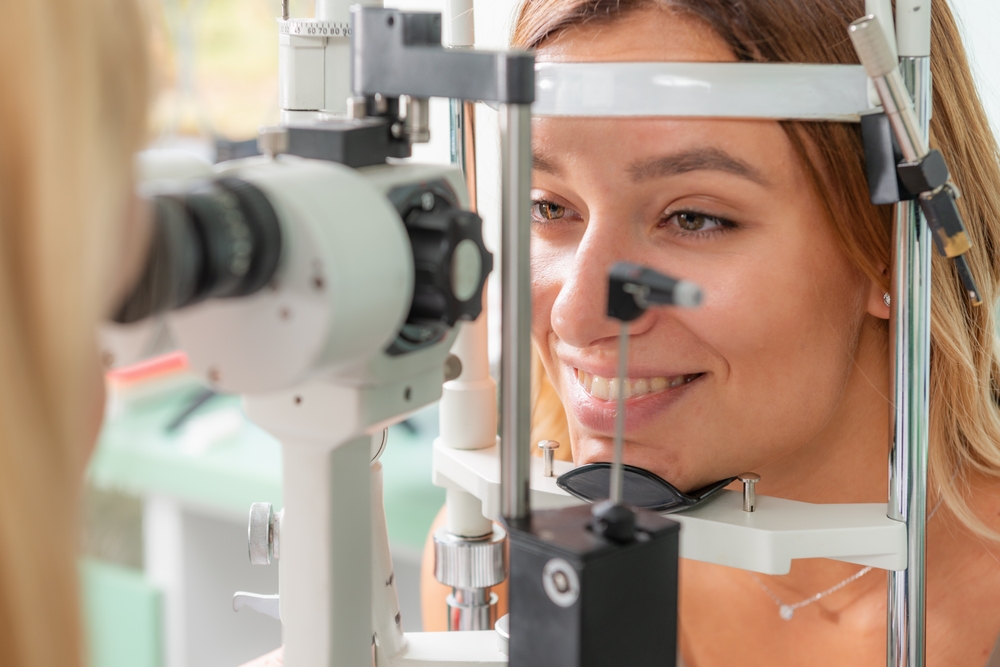
Routine eye exams do much more than check your vision. They provide valuable insight into your overall eye health. One important test we perform at Eyecare at the Cove Optometry is tonometry. This quick and painless measurement can reveal crucial information about the pressure inside your eyes and help us detect serious eye conditions before symptoms ever appear.
What Is Tonometry?
Tonometry is a diagnostic test that measures the pressure inside your eye, known as intraocular pressure (IOP). Monitoring IOP is critical because increased eye pressure can be a sign of glaucoma, a serious eye condition that can lead to vision loss if left untreated.
Why Is Intraocular Pressure Important?
Your eyes naturally produce and drain a fluid called aqueous humor. When this fluid is in balance, your eye pressure remains stable. However, if the fluid drains too slowly or is produced in excess, pressure inside the eye can rise. Elevated intraocular pressure is a major risk factor for glaucoma and can damage the optic nerve over time.
How Is Tonometry Performed?
During Goldmann Applanation Tonometry, your eye doctor will begin by applying a few numbing drops to your eye to ensure you remain comfortable throughout the procedure. Once your eye is numb, you’ll rest your chin and forehead on the slit lamp, a special microscope used for eye exams. The doctor will then gently bring a small blue-tipped instrument close to the surface of your eye. This device briefly touches the front of your cornea to measure the pressure inside your eye.
Another method we use is i-Care tonometry, which is especially helpful for patients who may be anxious about traditional methods. The i-Care tonometer is a modern handheld device that uses an ultra-light probe to gently and briefly touch the cornea - so quick and comfortable that no numbing drops are needed. Most patients describe the sensation as a quick tap and find it extremely comfortable. This method is fast, reliable, and can be performed while you are seated normally, making it a convenient option for many people.
What Do the Results Mean?
Tonometry results are typically measured in millimeters of mercury (mmHg). A normal IOP ranges from about 10 to 21 mmHg. If your eye pressure is higher than normal, it does not necessarily mean you have glaucoma, but it does indicate that you are at greater risk. Your eye doctor will interpret your results in the context of your overall eye health, family history, and any other risk factors.
• Normal IOP (10–21 mmHg): Generally healthy, but ongoing monitoring may be recommended if you have other risk factors.
• Elevated IOP (>21 mmHg): May signal increased glaucoma risk. Additional testing and monitoring are often advised.
Why Early Detection Is Crucial
Many people with high eye pressure experience no symptoms until significant damage has occurred. That’s why regular eye exams and tonometry testing are so important - especially if you have a family history of glaucoma or other risk factors.
Prioritize Your Eye Health at Eyecare at the Cove Optometry
Tonometry is a simple but essential part of your eye exam, providing important information about your eye pressure and your risk for conditions like glaucoma. i-Care tonometry remains one of the most accurate ways to assess intraocular pressure and detect changes early, giving you the best chance to protect your vision.
Take charge of your eye health by scheduling a comprehensive eye exam with tonometry at Eyecare at the Cove Optometry to ensure your eyes are thoroughly protected. Visit our office in La Jolla, California, or call (858) 283-3600 to book an appointment today.






